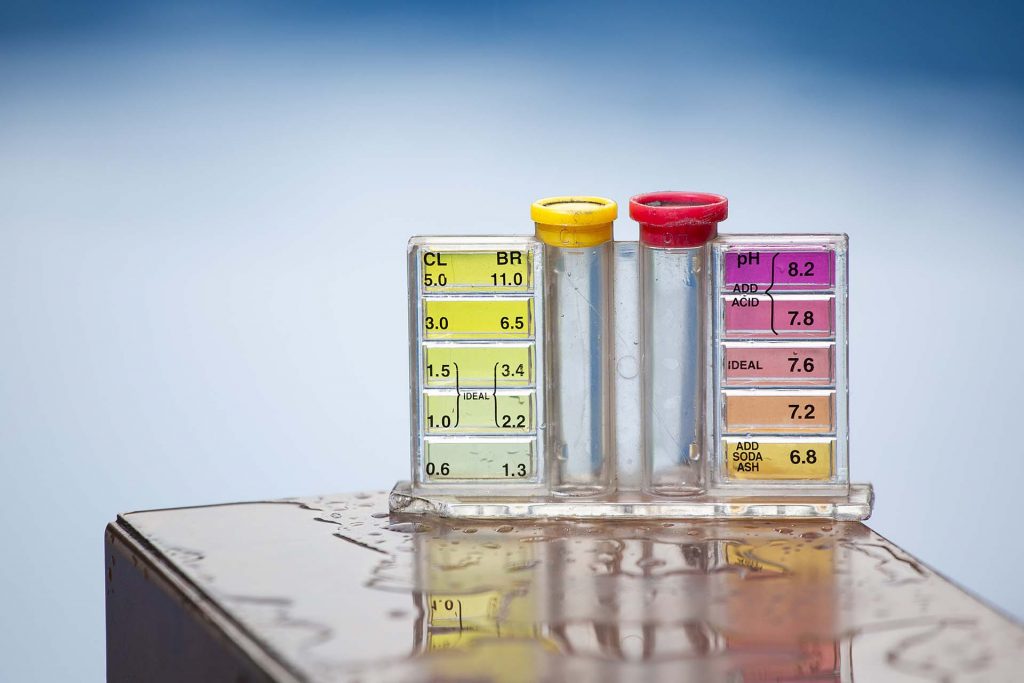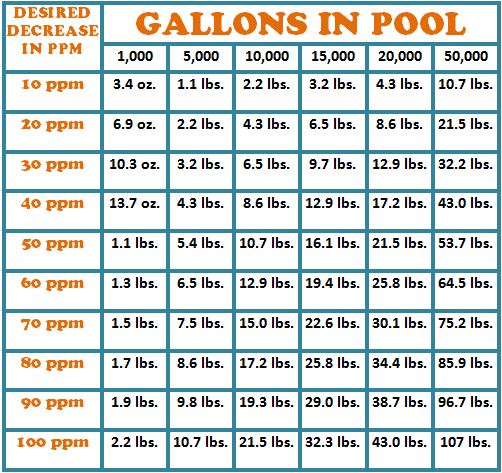When people ask me for advice on their swimming pools or spas on where they should start at the beginning of the season, I tell them that the most important critical parameter test to run for water treatment is the total alkalinity test because low or high alkalinity can make or break your pool water chemistry. What causes High alkalinity in a pool?
- Cyanuric acid also called CYA or chlorine stabilizer raises TA
- Liquid chlorine (or ‘sodium hypochlorite) has a high pH
- High Alkaline fill water
- Soda ash-pH control
- Sodium carbonate-pH control
- TA rises due to excess hydroxides left behind by calcium and sodium hypochlorite after oxidation
- Aeration of pool
What are the Root Causes Of High Pool Alkalinity There are several reasons why swimming pools have high total alkalinity. It could be the water source of where your pool water is coming from. In some areas, waters innately have a high alkaline water level. Another reason for high alkalinity is you might be using too many chemicals like sodium bicarbonate (or baking soda), in an attempt to increase the alkalinity range of your pools. This article will explain how and why
Introduction:
What Causes High Alkalinity in Pool
According to the USGS– Alkalinity is not a chemical in water, but, rather, it is a property of water that is dependent on the presence of certain chemicals in the water, such as bicarbonates, carbonates, and hydroxides. A definition of alkalinity would then be “the buffering capacity of a water body; a measure of the ability of the water body to neutralize acids and bases and thus maintain a fairly stable pH level”

In technical language, Alkalinity rises because of excess hydroxides left behind by hypochlorite chlorines: sodium hypochlorite (liquid chlorine) and calcium hypochlorite (cal hypo). There is a minor net rise in Total Alkalinity when all things are fully oxidized in the pool water.
However, there is a more rapid rise in TA when chlorine doesn’t completely oxidize contaminants and instead combines with nitrogen compounds like urea and ammonia. This does away with the production of hydrochloric acid (HCl) from the chlorine that would otherwise lower the pH and alkalinity after oxidation. Instead, alkalinity climbs higher.
- Cyanuric acid also called CYA or chlorine stabilizer is the most common pool chemical that raises total alkalinity.
- Liquid chlorine (or ‘sodium hypochlorite) has a high pH
- High Alkaline fill water- calcium carbonate produces high pH and alkalinity in source water added because of evaporation or splash out.
- Soda ash or sodium carbonate-commonly used chemicals for raising the pH level in a pool.
You can reduce the total alkalinity in your pool with a strong acid, such as muriatic acid or sodium bisulfate (pH decrease). Pay attention to the directions on the bottle, measuring and mixing only what you need to bring your alkalinity levels back to the ideal range of 100 to 150 ppm which affects the safety and cleanliness of your water, as chlorine kills germs in this ideal range.
High alkalinity levels naturally decrease over time on their own. However high total alkalinity can develop other issues, like high pH that leads to ineffective chlorine, which can lead to algae. So it’s often worth staying on top of high alkalinity issues before they cause more trouble in your swimming pool.
Adding an acid to a solution will lower the total alkalinity, but it will also lower the pH level. If the total alkalinity needs lowering without affecting the pH level, an acid is added, and straight after the water is aerated to raise the pH level without affecting the alkalinity.
What Causes Low Alkalinity in Pools?
- Rain can be acidic
- Increase in swimmer load
- Topping your pool off with H2O that has low alkalinity after backwashing/wasting
- Chlorine-Chlorine is acidic
- High H2O evaporation-losing H2O can dilute TA
- Pool H2O agitation-H2O agitation increases the loss of CO2 ………………………………………………………………………………………….Read more
How to Fix High Alkalinity in Pools
When pool alkalinity is higher than the ideal range, it can cause the pool water to have a cloudy appearance. The water will also start dumping the materials it absorbed onto your pool’s surfaces in a phenomenon known as “calcium scaling.” Scaling and cloudy water will cause any pool to look unattractive, but other problems exist too.
What you need to do is stabilize your pool H2O by finding the appropriate total alkalinity (TA). Alkalinity is the measure of a pool’s total amount of alkaline materials in the water. In other words, alkalinity is a measurement of the water’s ability to neutralize acids.

Low alkalinity in pools leads to dramatic spikes and dips in the pool’s pH levels, while high alkalinity leads to overly buffered pool water with pH levels that are difficult to adjust to a proper range that will stabilize the water’s chemistry.
Muriatic acid is a form of hydrochloric acid, which is a corrosive, strong acid. It’s available at most pool supply or home supply stores, it is readily available but is dangerous to handle so be careful slow, and patient.
- Turn off your pool’s pump-Aeration can raise Alkalinity
- Read the directions on the bottle-Follow instructions
- Follow safe handling practices- Muratic is a great choice but use caution.
- Pour the product into the water products need to be diluted
- Broadcasted the acid evenly over the pool’s surface
- After an hour or so, turn on the pool pump to mix H2O
- Test the alkalinity and pH levels
- Retest
Fixing high alkalinity in pools requires a systematic approach to rebalance water chemistry and restore optimal conditions for swimming. The first step is to test the pool water using a reliable water testing kit to determine the alkalinity level accurately.
Once high alkalinity is confirmed, several corrective measures can be taken. One common method is to lower alkalinity by adding an acid, such as muriatic acid or sodium bisulfate, to the pool water. This acid reacts with alkaline substances, reducing alkalinity without significantly affecting pH levels. It’s essential to follow manufacturer instructions and safety precautions when adding acids to the pool.
Conclusion:
When people ask me for advice on their swimming pools or spas on where they should start at the beginning of the season, I tell them that the most important critical parameter test to run for water treatment is the total alkalinity test because low or high alkalinity can make or break your pool water chemistry.
- Cyanuric acid also called CYA or chlorine stabilizer raises TA
- Liquid chlorine (or ‘sodium hypochlorite) has a high pH
- High Alkaline fill water
- Soda ash-pH control
- Sodium carbonate-pH control
- TA rises due to excess hydroxides left behind by calcium and sodium hypochlorite after oxidation
- Aeration of pool
How do you fix High pH with Low Alkalinity?
Put pool filter on recirculate
Run pump
Add soda Ash or sodium bicarbonate to raise alkalinity
Evenly distribute powder on the pool’s surface by walking around the pool
Waiting at least 6-8 hours for retesting TA
Once the alkalinity reading is 80-120 ppm .………………………………………………………………. Read more

References:
USGS- Alkalinity and Water
FAQ’s


